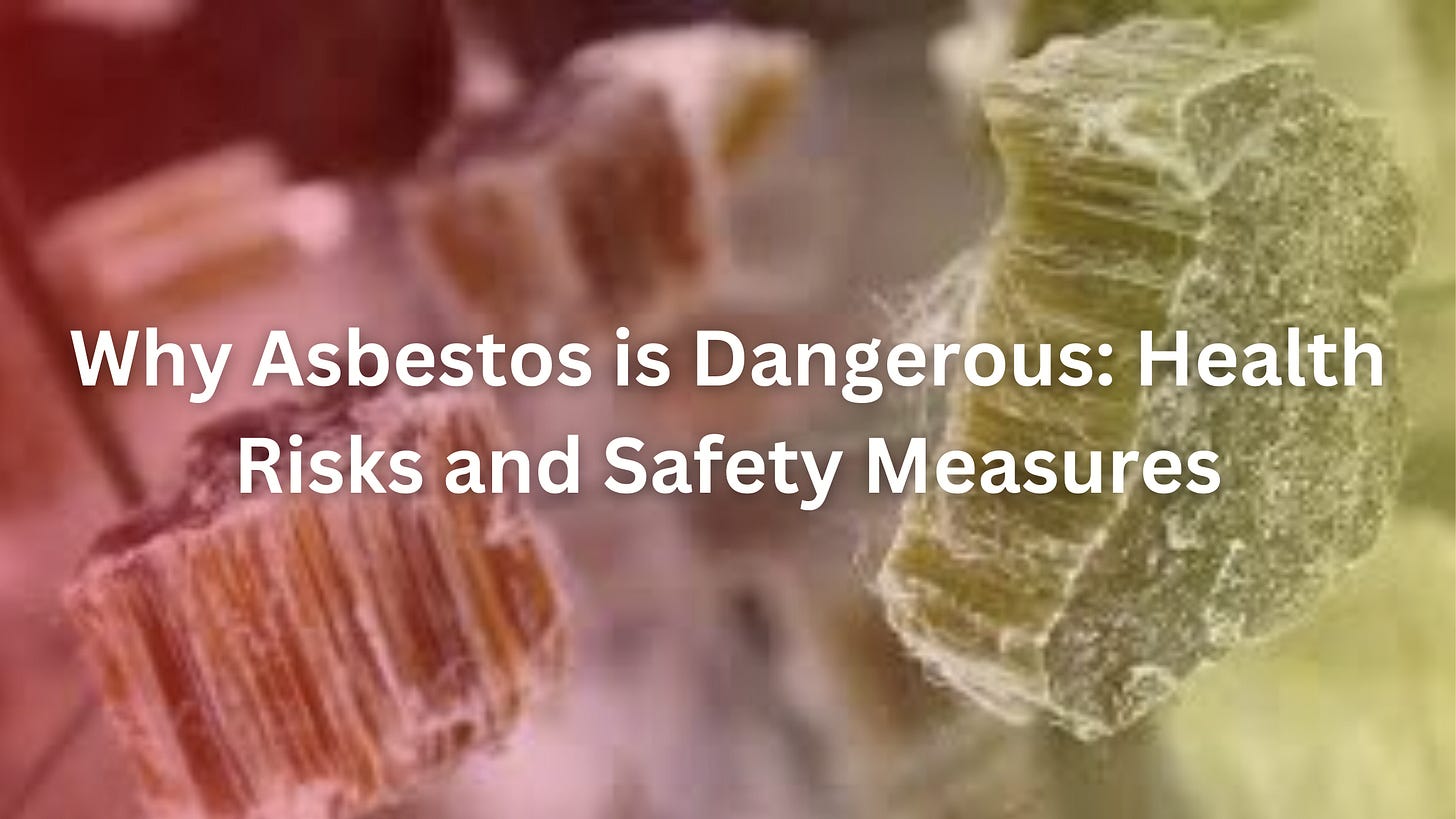Why Asbestos is Dangerous: Health Risks and Safety Measures
Unveiling the Risks of Asbestos: Understanding Its Health Hazards and Preventive Measures
Asbestos, once hailed for its remarkable heat resistance and durability, is now recognized as one of the most hazardous materials to human health. This mineral was widely used in construction, insulation, and manufacturing until its risks became widely known. Understanding why asbestos is dangerous is essential for public health, workplace safety, and environmental protection.
What is Asbestos?
Asbestos refers to a group of six naturally occurring silicate minerals composed of fine, durable fibers. These fibers are resistant to heat, chemicals, and electricity, making asbestos a popular material in industries such as construction, automotive, and manufacturing.
Health Risks of Asbestos Exposure
The primary danger of asbestos lies in its microscopic fibers. When disturbed, these fibers can become airborne and, when inhaled or ingested, can lead to severe health issues. The body cannot break down or expel these fibers, causing them to accumulate in the lungs and other tissues over time.
1. Asbestosis
A chronic lung disease caused by the inhalation of asbestos fibers.
Symptoms include shortness of breath, persistent cough, and chest pain.
Asbestosis leads to scarring of lung tissue, impairing oxygen absorption.
2. Lung Cancer
Prolonged asbestos exposure significantly increases the risk of lung cancer.
The combination of smoking and asbestos exposure compounds this risk.
3. Mesothelioma
A rare and aggressive cancer affecting the lining of the lungs, abdomen, or heart.
Almost exclusively linked to asbestos exposure.
Symptoms may not appear until decades after exposure.
4. Pleural Disorders
Includes pleural plaques, pleural thickening, and pleural effusion.
These conditions affect the membrane surrounding the lungs, leading to discomfort and respiratory issues.
Why is Asbestos Still a Concern?
Although many countries have banned or restricted asbestos use, it remains a concern due to:
Legacy Asbestos in Buildings:
Older homes, schools, and public buildings may still contain asbestos in insulation, flooring, and roofing materials.
Occupational Hazards:
Workers in construction, demolition, and renovation are at high risk of disturbing asbestos-containing materials (ACMs).
Environmental Exposure:
Naturally occurring asbestos can become airborne due to erosion or human activity.
Improper disposal of ACMs can contaminate soil and water sources.
How to Manage Asbestos Risk
To mitigate the dangers of asbestos, strict regulations and safety measures are essential:
1. Identification and Testing:
Professional assessment to detect ACMs in buildings or industrial sites.
2. Proper Handling and Removal:
Only licensed professionals should handle or remove asbestos.
Safe removal techniques minimize the release of airborne fibers.
3. Personal Protective Equipment (PPE):
Workers dealing with asbestos must wear appropriate PPE, such as respirators and disposable coveralls.
4. Public Awareness:
Educating people about the risks of asbestos and safe practices for handling it.
5. Compliance with Regulations:
Adherence to government guidelines for asbestos use, disposal, and abatement.
Monitoring air quality in high-risk areas.
Signs of Asbestos Exposure
The effects of asbestos exposure can take decades to manifest. Symptoms may include:
Persistent coughing or wheezing.
Chest tightness or pain.
Shortness of breath.
Unexplained weight loss or fatigue.
If you suspect asbestos exposure, seek medical advice promptly for early detection and intervention.
Conclusion:
Asbestos is a silent yet deadly hazard that poses significant risks to human health. Its fibers, once airborne, are nearly impossible to detect without specialized equipment, making prevention and proper management crucial. While modern regulations have reduced the prevalence of asbestos, its legacy continues to endanger workers, homeowners, and the environment. By understanding the dangers and implementing strict safety measures, we can minimize the risks associated with this hazardous material.


